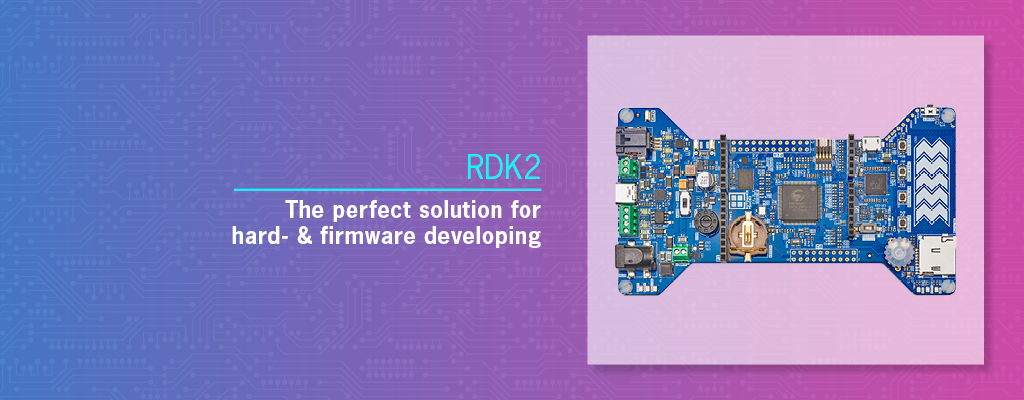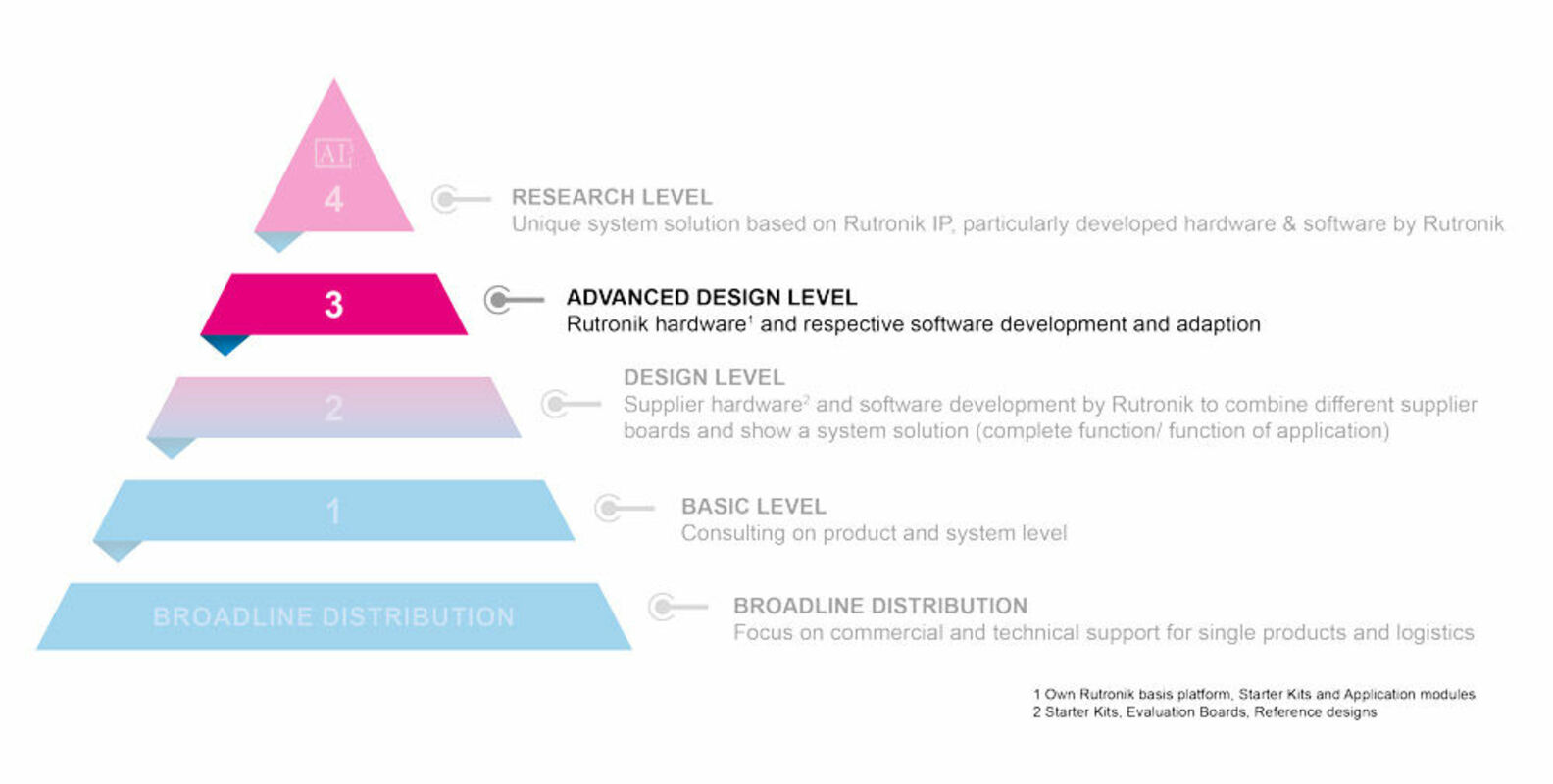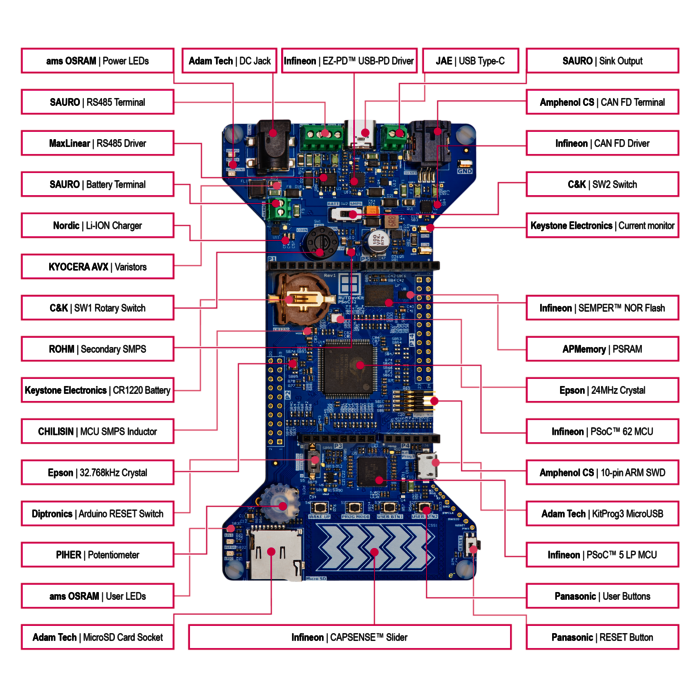Rutronik Development Kit - RDK2
Target Set: Faster Time to Market
Like its predecessor board RutDevKit-STM32L5 the RDK2 offers a complete solution for hardware and firmware developers and a basis for a modular toolkit, so that proof of concepts can be created in a very short time. The RDK2 is especially designed for touch and proximity applications in the fields of Internet of Things as well as Industrial IoT (IoT, IIoT), smart wearables, smart home, medical devices, etc. It runs on the PSOC™ 62 MCU by Infineon. The microcontroller has a dual core CPU and is therefore ideal for secure edge computing and cloud applications. The PSOC™ 62 has an integrated power management IC for SMPS for all connected power supplies.
Improved: Design, Handling and User-Friendliness
The board's new and unique butterfly design allows for improved handling and user-friendly access to the Arduino connectors and reduces potential interference from electromagnetic effects, especially with RF IoT Arduino Shields. The integrated potentiometer can be used for testing the analog-to-digital conversion. A special feature is that the user can access all pins of the PSOC™ 62 via supplied headers. In addition, a capacitive sensor technology has been installed, the so-called CAPSENSE™. This enables a touch area that can be used as a slider. All components of the BOM can be found in the Rutronik portfolio.
Rutronik Solutions Level 3 – Advanced Design Level
Hardware and corresponding software development and customization by Rutronik
First choice for the RDK2 was Infineon’s microcontroller PSOC™ 62. It is built on an ultra low-power platform (40-nm) and combines an Arm® Cortex™-M4 and Arm Cortex-M0+ CPUs with low-power Flash technology, programmable digital and analog resources, and offering high- performing CAPSENSE™ technology. Built around the PSOC™ 62 are best fitting standard components in order to offer the highest level of benefit and access to all the comprising features of the microcontroller for customers.
Contact





